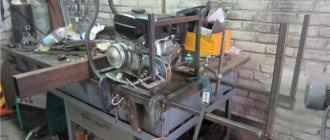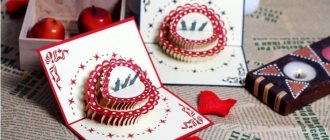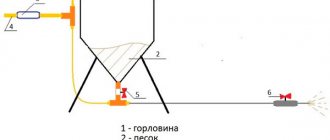When hunting game birds, a good decoy that allows you to easily reproduce the voices of birds is an indispensable condition for successful hunting. At the same time, most experienced hunters prefer not factory-made models of in-line production, but those made by themselves. Everyone has more than one way to make a duck decoy with their own hands and how to achieve the best sound of the instrument.
How to make a decoy yourself
Not all hunters know how to make a decoy on their own, but this way the principle of its operation will be much easier to understand. A bird will react just as well to a duck decoy made with your own hands if you follow the technology, make drawings and achieve a good voice sound.
It will be useful at work:
- dry birch cuttings;
- lathe;
- drill;
- jigsaw;
- drawing.
At the first stage, it is necessary to make a longitudinal hole in the cutting. To do this, use a drill and a lathe.
At the second stage, you need to cut the workpiece lengthwise with a jigsaw. Both halves need to be processed on one side into a cone, so that when they are connected, a one-sided wedge will be obtained.
At the third stage, when you make the decoy yourself, you will need to form a double-sided wedge, and to make it more convenient to do this, you can temporarily connect the blanks together with tape.
The work didn’t end there; now it’s time to start processing the product using alcohol stain. After drying, nitro varnish is applied. This is how the decoy body is made, but its design must have a membrane, which you can also make with your own hands.
To make a membrane that will make sounds, you will need a piece of thin tin, which can be taken from a tin can. Its size must exactly match the resonator. The membrane is inserted between the halves and secured with cambric.
The tincture of the voice sound is made by selecting the location of the membrane inside the semolina. It is worth moving both the cambric and the membrane along the resonator. Of course, making such a device with your own hands is a job that not every hunter can do. Therefore, for some, the optimal choice would be to purchase a ready-made device that is most suitable in all respects.
Number of reeds
A duck decoy can have from one to three reeds. The sound quality of the decoy and the ease of use depend on the number of reeds.
- Single-tongued decoys are superior in sound quality to all other decoys; the sound of such decoys is the most realistic, sonorous and rich. They practically do not stick due to humidity. Difficult to master for novice hunters, the slightest error in sound extraction becomes immediately noticeable.
- Double-tongued decoys - recommended for use by novice hunters. Double-tongued decoys forgive many of the mistakes of a novice caller; mistakes do not affect the sound quality. The disadvantage of a two-tongue decoy is that it sticks much more often and more strongly than a single-tongue one. Sticking of the semolina occurs due to the ingress of moisture from the breath of the decoy operator into the decoy. The sticking of the decoy is greatly influenced by the design of the decoy and weather conditions during hunting.
- Three-tongue decoys are found and used much less frequently than single- and two-tongue decoys. The sound quality corresponds to a two-tongued decoy. Sticks as well as a two-tongue one or even a little more. Not recommended for purchase by novice hunters.
How to make a wood splitter with your own hands - instructions and drawings on how to properly make a device for splitting firewood (155 photos)
Decoy for a wigeon from shell skirts
Making a wigeon decoy is very simple and quick. As a starting material, you will need only 2 plastic sleeves of necessarily 12 gauge. Their skirt should be narrow. (photo 1) The first step to making is to measure the width of the skirt. You need to know exactly how many mm. She hides the plastic. (photo No. 2)
Photo No. 1 Photo No. 2
The sleeves are cut from plastic in double measurements: if the skirt is 7 mm wide, then the tube should be 14 mm. (photo No. 3,4)
Photo No. 3 Photo No. 4
The resulting ring should be even. (photo No. 5). The old primer is knocked out of the cartridges. (photo No. 6)
Photo No. 5 Photo No. 6
After heating the sleeve in a candle flame, remove the skirt from it. (photo No. 7, No. 8)
Photo No. 7 Photo No. 8
The primer seat is leveled on the anvil using a hammer and a flat head bolt. (photo No. 9) Use a 5.5 drill to trim the holes. (photo No. 10)
Photo No. 9 Photo No. 10
After preparing the semolina parts, they are washed to remove soot and dirt and wiped dry. (photo No. 11) you can start assembling the wigeon decoy.
A plastic ring is inserted into the sleeve skirt and covers the other one. (photo No. 12)
The decoy is ready. (photo No. 13) You can wrap it with electrical tape and attach a cord for ease of wearing.
Varieties
There are two types of devices - electronic and wind.
Electronic
With the help of electronic devices it is possible to obtain the most naturalistic sound. However, the cost of electronics is high, so many hunters are forced to give preference to mechanical (wind) devices for attracting birds.
Note! In order to neutralize the advantages that electronics give to hunters, hunting with an electric decoy is prohibited in many countries and regions of Russia.
The attractiveness of the electronic device is enhanced by the fact that even novice hunters can use it effectively. Simply select the desired type of scream from a large music library and turn on the sound.
There are three types of electronic luring devices:
- Cassette. The design is reminiscent of portable tape recorders, where magnetic tape is used as a sound carrier. The audio signal is recorded in mono or stereo mode. This class of devices has many disadvantages, so they could not supplant traditional mechanical decoys. The disadvantages of cassette devices, in particular, include high energy consumption, low sound quality, significant cost and inconvenience of use.
- On electronic chips. This is the most common type of electronic decoys, replacing cassette devices. Inventory is stored on an embedded or removable chip. Disadvantages: average sound quality, high cost, difficulty in replenishing the stock of background recordings, limited selection of sounds as standard, outdated schemes using pulse-width modulation.
- On the memory card. These devices belong to the latest generation of electronic decoys. The sound is as close as possible to that made by a real bird. It is possible to change the set of sounds in memory.
The best models are equipped with 15-20-watt speakers, which ensures that the sound signal propagates over a distance of up to 1.5-2 km. The device is equipped with 150–200 voices of various animals and birds. The cost of electronic devices is high and can reach 80–120 thousand rubles.
Brass
Traditional mechanical decoys are still widely used. Their advantage is affordability. Domestic devices most often imitate a clothespin in appearance, while foreign ones imitate a pipe. The latter are considered the best choice in terms of natural sound and ease of operation.
Pipes are divided into single-tongued and petal-shaped. Single reed horns produce the most realistic quacks, but high tones are easier to achieve with reed horns.
Classification by sound volume:
- Low volume (Timbler class). They are used in calm weather at a short distance from the geese.
- Medium volume. Used on small lakes. Audibility is up to a kilometer.
- High volume (Open Water class). Suitable for large lakes or in bad weather conditions.
Another important parameter is sound timbre. Universal devices are used to attract all types of birds, including ducks, dabbling ducks, mallards, and white-fronted goose. More effective are specialized decoys designed to imitate the cry of specific breeds. For example, the sound of a lesser white-fronted goose is significantly different from the sound made by a greylag goose.
Note! The voice of young geese is higher and gentler than that of older birds.
To effectively use a mechanical device, you should understand that geese do not just scream, but convey specific information with their voice. Therefore, it is important to be able to create the sound that calls the bird to the feeding place.
Duck decoys, wind and electronic
Duck decoys can be either electronic or wind. Hunting with electronic decoys is prohibited by the current hunting rules; in addition, wind decoys sound much better and more realistic than electronic decoys, and hunting with them is much more interesting. A real, self-respecting duck hunter should hunt only with a blow decoy.
Homemade wood version
How to make a decoy? Naturally, it is best to start with the simplest and most common material - wood. Different types of wood will produce different timbres of sound, and therefore it is possible to experiment to find the most suitable one for your purposes. As practice shows, experienced hunters make and carry with them not just one whistle, but a whole set. The advantage is the ability to quickly change a faulty or dirty device to another.
The simplest drawing of a duck decoy involves the use of birch as the main material.
Electronic and wind decoy
However, it is important to note here that it is prohibited to use an electronic decoy for hunting. It is usually used by photographers, for example, to conduct a beautiful photo shoot of feathered friends. Hunters can only use it to learn to imitate the sounds of flying friends.
Therefore, answering the question of how to make an electronic decoy, it is immediately worth noting that only wind options can be made. They can be made by a variety of methods from a variety of materials, and the design can actually be individual in each individual case. Among them there is the best model. This is recognized as a decoy made with your own hands, which does not require constant support by the voice, and only a small stream of blown air is required for sound. There is one main structural difference between these two models - the structure of the membrane. It can be made from either one or two petals, as well as from different raw materials.
conclusions
In the end, it is worth saying that the variety of decoys allows them to be made from a variety of materials. More experienced hunters, who already have experience in this matter, ask questions such as how to make a decoy for wapiti from film, for example. However, this is quite complicated, and therefore it is worth starting with simpler and more understandable examples. You should move on to complex structures only after assembling a sufficient number of simple specimens. In general, this design will greatly facilitate the task of hunting different types of birds.
Getting the job done
The tube of this item will be the body of the future decoy. In it, stepping back 2 cm from the edge, you need to cut a small section in two movements. The first movement is to equip a vertical and straight cut closer to the edge. The second cut is inclined, and it should be in the same place.
How to make a decoy for black grouse from the same syringe? To finish the job, you need to use the piston to set the threshold to the desired position. The correct position is that the end of the sill rests or protrudes slightly beyond the vertical line of the hole made earlier. In this case, the bevel of the flat should be directed towards the outlet.
The final manufacturing steps are as follows. The syringe rod is extended, the appropriate sound is adjusted, after which the excess part is cut off so that it is possible to close the decoy with a lid.
General provisions
This device is used at different times of the year, during hunting in both large and small bodies of water. Today there are three groups into which all structures are divided. The decoy can be quiet, loud or universal. How to make a decoy quiet or loud? The fact is that the timbre and volume of this device depend on the material from which it is made, on the design, and settings. It may seem strange to people unfamiliar with this business, but for fans of this business it has become a real competition to see who can better imitate the sounds of birds and who has the best decoy. How to make a decoy so that it is as effective as possible?
Here it is worth paying attention to the fact that the design can be wind, when the sound is produced by blowing air, or it can be electronic, which, in fact, simply reproduces the real sounds of a particular bird.
What materials are decoys made from?
The materials for decoys are different: they include plastic (polycarbonate), acrylic, wood, and their combination. The highest quality decoy is made from acrylic: it stands out in terms of timbre, is more sonorous, is resistant to weather changes, is less hassle to use and, moreover, it looks amazing. The wooden decoy gives a hoarse sound, it is also beautiful, because it is made from valuable species of ebony, cocobolo, and rosewood, but it must be kept in a dry room and at the same time be careful not to dry out. Decoys are also made today from stabilized wood, which has properties similar to acrylic. Polycarbonate or plastic decoys do not like high temperatures, sound good and are affordable in price, they are suitable for both beginners and true connoisseurs of hunting.
Why do you need a spirit bait? Is it possible to hunt without it?
Of course, when hunting wild ducks and geese, a decoy is, in most cases, simply necessary. This instrument has been used since ancient times, when people realized that imitating bird sounds makes it much easier to catch feathered prey. Hunting without a decoy will be less effective. It is not a fact that many hours of hiking along hunting trails will be crowned with success in the absence of any sound lures; the bird simply will not pay any attention to you. The special sounds made by a quack whistle will help you attract the attention of birds and lure them to your ambush site, from where you can take a kill shot.
Using decoys requires training
Using a spirit bait has some nuances:
- Do not blow into the device all the time . By arranging a brass band concert out of a hunt, you will scare away all the game for kilometers ahead. First, “quack” several times, then wait, “quack” again;
- using bait requires practice . As funny as it may be, you also need to learn how to quack. The training will be long and possibly unsuccessful at first. But improvement is the path to perfection, so the more you practice, the better you will be able to lure prey;
- You need to hunt with a decoy early in the morning or in the evening . It has already been said that the best time for duck hunting is these time periods. But remember that as soon as the field of visibility is significantly reduced, you need to start winding down the process until the next time;
- in autumn and summer, you need to lure game in those areas where there is the most vegetation . But in the spring, any area where ducks are expected to be found is suitable;
- Proper camouflage is important . Agree that a man standing in the middle of the forest blowing a quack whistle is unlikely to make ducks want to fly closer to him. So choose hunting clothes in neutral shades that are similar to the environment. You can make a stealth;
- The beginning of September is the most ineffective time for hunting with blow bait . During this period, the chances of shooting a bird are the lowest, even if you have met all the necessary conditions.
How to attract a bird correctly
Some novice hunters are interested in how to properly decoy a duck in the spring. You can do this as follows:
- The sounds made by the decoy must imitate the voices of females of exactly the same species as the drake being hunted. In the spring season, several different species can be found simultaneously. Accordingly, at this time of year it is necessary to stock up on a wide variety of stuffed animals.
- You can use an ordinary decoy duck instead of a stuffed animal. Some hunters breed them specifically in order to later use them during hunting.
- As for the stuffed animals, they need to be placed randomly. They will create the appearance as if a flock has landed on the water. There is no need to place them in rows. This may scare away the drake.
- In an ambush you need to sit at a distance of approximately 15 m. Moreover, this distance should be to the farthest stuffed animal. The bird itself should be placed on a strong leash, the length of which is approximately 1 meter greater than the depth of the reservoir.
- The decoy duck must be positioned so that it faces the hunter. At the same time, her leash had to be very thin, always strong, and as for the load, the house had to be sufficient to be able to keep it in the water. One kilogram is enough. Stuffed animals can be placed on the sides of the decoy duck. But at the same time, it is imperative to ensure that the leashes do not get tangled. As soon as the ducks approach, the hunter should begin to make several staccato quacks. Thus, it imitates the voice of ducks of this species. And the decoy duck will attract the mallard drakes. It is better not to imitate their voice.
Some people are interested in: how to properly attract a duck with a wind decoy? A lot depends on how well the hunter uses the decoy. A decoy duck is good for hunting, but it is not always possible to get it out of a pond later, and a stuffed duck is the most ideal option.
Comments
- Oleg 07/01/2015 at 22:09 You won’t be able to lure her in with just one decoy.
We use stuffed animals a lot to boot! This is very attractive to the ducks. I have always made decoys myself, since childhood) This way you get even more pleasure from hunting . Reply - Denis 12/15/2015 at 13:48
Choosing a decoy is actually not an easy task. That's why I always make mango myself. It was also interesting to read this article, as it contains some useful tips and nuances. I will take them into account for future production. Moreover, I have been interested in wood carving for a long time.Answer
Add a comment
latest comments
Alexey: How can I order?...
Vladimir: The material is outdated and requires correction on two points: - described ...
Mikhail: Is it possible to make a module for Muscovite heels? How much will it cost …
Gennady: One person did something and everyone else should be responsible for it...
: If he opened fire within the city, then this is not a hunter, but a idiot...
Anatoly: In the requirements for documents for renewal, replace the psychologist with a psychologist...
YuryY: Having shot 1 can of gunpowder, Bars was very pleased with it, the factory weighed it...
Acorn: You understand so much...
: Vile degenerates! Bastard hunters, cowards, shoot yourself and that’s it...
Alexander: 35g, it’s simply impossible to stuff it into a pistol cartridge. People, for example...
Vladimtr: No, it’s not a typo, it says 35 g of Gunpowder per bullet weighing 7.45 g of gunpowder...
Evgeniy: It’s not clear. But for a state fee of 650 rubles, can I buy pheasant and...
Survey
What should you do next?
At this stage, the bone is degreased. Acetone is ideal for this purpose. Then equip one end of the bone with an even perpendicular cut, and the other end with an angled cut. Next, the workpiece is equipped with a sound hole. If the internal diameter of the bone is 4 mm, then the width of the hole should be within 2.5 mm. Like the semolina from an insulin syringe, this device should also have a threshold through which you can adjust the sound. Craftsmen make the threshold from wax. Using two drill diameters of the required size, this element is pushed into the bone so much that it protrudes a third beyond the hole.
Selection rules
When choosing semolina, it is recommended to adhere to the following rules:
- In large spaces it is better to use ringing decoys. In small areas the sound should not be too loud.
- The best material for making a ringing decoy is acrylic. For small spaces, wooden decoys are used.
- Russian-made decoys have the same operating principle as foreign devices. However, the cost of domestic devices is often lower.
- Each breed of bird, be it the bean goose, gray or white-fronted goose, has its own type of sound signals. However, even the “wrong” decoy signal can work if wild geese show curiosity, which often happens.
- The easiest way to develop skills in working with decoys is on single-petal models. At the same time, multi-petal decoys are more suitable for hunting, as they convey the overtones of a goose call better.
The most famous models of decoys presented on the Russian market:
- Haydel's. A well-known American brand offers comfortable decoys, marked by the number of petals. Almost all models of this company are made of carbon fiber. It is for this reason that Haydel's decoys, although they look impressive, do not produce a very authentic sound.
- Goes Hunting Calls. The company offers high-quality decoys of the Trainwreck and Sidekick models. All decoys are made on the basis of threaded connections.
- Echo Calls. A well-known brand, popular among professional hunters. The decoys from this company are distinguished by their stylish appearance and excellent sound capabilities.
- Team Ground. The products of this manufacturer are equipped with three-stage sound control, which makes it easy to control the volume of the signal.
- Field Proven Calls. Decoys at affordable prices and with a lifetime guarantee. They have short bells, which is convenient for novice users.
Making your own semolina
Goose hunting requires a suitable and high-quality decoy. And the absence of such confuses hunting enthusiasts. The problem is that the goose flies only to the cry of its own kind. Different species of birds have different voices. Even representatives of the same species change their voice in different seasons, so different devices are needed to lure them.
Many Russian brands only imitate foreign brands. For example, American decoys and their Russian analogues imitate the voice of the white-fronted goose, common on the overseas continent. We almost never have such birds, so devices designed for this type of bird are not suitable.
Cheap models often do not reproduce the cry of a goose at all, but produce obscure sounds. Therefore, experienced hunters prefer to make homemade goose decoys. These devices are made from different materials, and each manufacturing process has its own characteristics.
How to make a decoy from brass shells?
A capsule socket with a diameter of 6.5 mm is drilled into the sleeve. From the other end, the sleeve is brought to the sharpener, and a small cut is made approximately 1 cm from the edge. In this place, an even triangular cut with a height of 10-11 mm is made. A piece about 1 cm high is cut from a plastic cylindrical rod. The edge of the cylinder is sawed off on one side at a slight angle. The narrow edge of the plastic is inserted into the sleeve from the cut side.
Making semolina from seed
To make a device from bone, you will need a bird's drumstick. The edges of the bone are cut off using a metal saw, and the bone marrow is cleaned out. Then a sound hole with a diameter of 2.5 mm is made, the edges are ground down. A piece of wax is used to close the sound hole by a third. A thick needle is used to make a hole in the wax, achieving the desired sound of the decoy.
Homemade wood
You can make a beautiful and high-quality decoy from wood. To do this, it is best to take a small, even birch cutting. A hole is drilled in it and then cut lengthwise into two parts. Both halves are sharpened wedge-shaped on one side. Then the halves are put together, gluing the unsharpened part. The membrane can be made from a sheet of tin. The membrane is placed inside the product, regulating the sound by its position.
Homemade gas canister
A gas canister from an air gun or siphon is suitable for making bird decoys. However, there is a danger when working with it - the gas inside. It is released by screwing a self-tapping screw into the cylinder and hitting it with a hammer from a distance. The sound will be loud, so it is better to wear headphones and protect your eyes with glasses.
Then a hole with a diameter of 3-4 mm is drilled in the cylinder. The other edge is cut with a hacksaw. The diameter of the hole is a little more than a centimeter. A small sound hole is made on top. Check the sound and widen the hole if a different tone is needed.
Features of duck hunting
One of the main features of duck hunting is the use of a special tool - a decoy. The essence of the decoy's work is to imitate sounds that are as similar as possible to the calling cry of various birds from the duck family (for example, mallards, teals or pintails). At this stage, the hunter himself is required to take a minimum of active actions - find a good position, disguise himself and make the call as natural as possible (as far as possible, of course). Next, you should wait until the desired bird approaches to such a distance from which you can make an ambush shot and not miss.
You can find out what types of ducks exist in nature by reading a specialized article on our website.
Many types of hunting involve the use of sound decoys
The most successful time for duck hunting is considered to be early morning (about the first hour after dawn) or the very beginning of the evening (falling dusk). It continues as long as visibility allows. How successful the hunt will be depends on the experience of the hunter, the amount of game in the area and, of course, a well-chosen place for the ambush.
Rules for using duck decoy:
- As soon as you notice at least one duck, make 6-8 “quacks” at a time.
- The first sounds should be interrupted by a pause, and then you can “quack” without stopping.
- After making a series of first “lures”, repeat the call (after 6-12 seconds).
- Be patient, because these birds are not so stupid as to immediately fly to the voice of the first drake (duck) they come across. The ducks will first make a couple of laps of honor, which serve as a way to reconnoiter the area. The radius of such flights is decent, so do not rush to change the ambush location.
Wild ducks inhabiting Russia
Making semolina
If you take up and make a decoy with your own hands, you can better understand the principle of its operation. A homemade decoy has a more original and unique sound, with its own special tonality. The luring device can be made from shell casings, or from wood.
Design of a reed wind decoy for duck - manufacturing diagram
Wooden decoy
This duck decoy is made from a dry cutting, preferably birch. Using a drill, we make a small longitudinal hole in the central part of the handle. The next step is to use a jigsaw to cut the wooden block lengthwise. The most convenient way to do this is in a vice. After sawing, process the halves so that a one-sided wedge is formed. Then these two blanks are folded together to create a double-sided wedge. The entire surface is treated with alcohol stain, and after drying it is covered with nitro varnish. The membrane is easy to make with your own hands. For it, a piece of thin tin from an ordinary tin can is used. The dimensions of the membrane are necessarily equal to the resonator. The membrane is carefully inserted between the blanks and secured with cambric.
The sound is adjusted by moving the membrane and cambric. If the inside diameter is large, the sound is low, and if it is small, the sound is high.
Decoy from shell casings
The second option is suitable for those who are wondering how to make a goose decoy. After all, a shell decoy is ideal for hunting this large and interesting bird. To make a decoy, you need some skills in working with a lathe.
Homemade goose decoy from a cartridge case
A homemade decoy is made from two cartridges 70 mm long, 32 and 28 caliber.
A prerequisite is that the cartridges must have a primer to avoid air leakage. Using a triangular file, a small cut is made at a distance of a centimeter from the edge of the sleeves. This cut should be 10 mm long and 5 mm high. Separately, two plugs are made equal to the diameter of the sleeves and 10 mm long.
Design of a goose decoy - diagram for manufacturing
It is better to use natural cork. It is much more elastic and holds well inside the device. There should be a gap of 3 mm in the cork strictly opposite the cut. To do this, the plug needs to be sharpened with a file and inserted into our sleeve.
A handmade decoy will look like a child's whistle. However, this does not reduce its effectiveness.
Both sleeves are aligned to the cut level and soldered together. You can also use transparent tape as an alternative to soldering. You can solder a ring on the bottom and attach a strap - this will make the decoy easier to carry with you. The tonality is adjusted by moving the plug inside the sleeve.
When luring geese, you need to blow into both sleeves at once, producing a strong and deep sound.
A hand-made decoy allows you to adjust the tonality and depth of the quack. Many hunters prefer homemade ones over purchased ones precisely because they are easier to work with, and also, if necessary, make their own adjustments and change the device. Another important point is that you can make quite a few decoys with your own hands for each type of duck or geese, experimenting with the sound volume.
The result of hunting a goose with a decoy
Wind instrument. Second manufacturing method
In this version of the oven semolina, you will need a dried birch cutting of medium thickness. Using a lathe, make a through hole in the center. Then a difficult operation awaits: cut the resulting workpiece in half lengthwise. For everything to go well, the cutting blank is placed in a mandrel made of wooden beams. Both parts should fit snugly against each other. Clamp the framed piece in a vice and cut down the middle using a jigsaw.
You will have two halves of tubes in your hands. Further algorithm of actions:
- Sand each half on both ends.
- Grind the material down to a cone.
- Fold the blanks. You will get a double-sided wedge.
Advice. The procedure is quite complicated. To simplify it, before stitching into a wedge, fold both parts, wrap them with tape, secure them in an old mandrel and carefully remove the desired part of the material with a file.
After proper stitching, do not rush to tightly connect the halves of the workpieces. At first:
- sand completely;
- saturate with alcohol stain;
- wait until completely dry;
- open with nitro varnish.
Prepare a membrane - for example, from an ordinary tin can. The thickness of the material should not exceed 3 mm. Cut a circle to the size of the hole and insert it between a pair of blanks. Tighten the latter with cambric or other available waterproofing material. Setting up such a decoy is done by moving the membrane inside the tube.
Advice. The thinner the inner hole of the decoy, the higher its sound will be.
Decoy made from a plastic spoon
You will need : a drill, a plastic spoon, two hook rings, a hook, a swivel, paint, a brush and a saw.
- First cut off the top of the spoon.
- Draw a picture. Try imitating other lures when you draw. If you're using a white plastic spoon, you can try more bright colors like orange, yellow, and pink. But if you used a metal spoon, which is much heavier than a plastic one, it will be even better due to its reflection in the water.
- Attaching the hook and rings. Drill out the front and back of the bait, add a slip loop on both sides, place a swivel in the front and a hook in the back.











